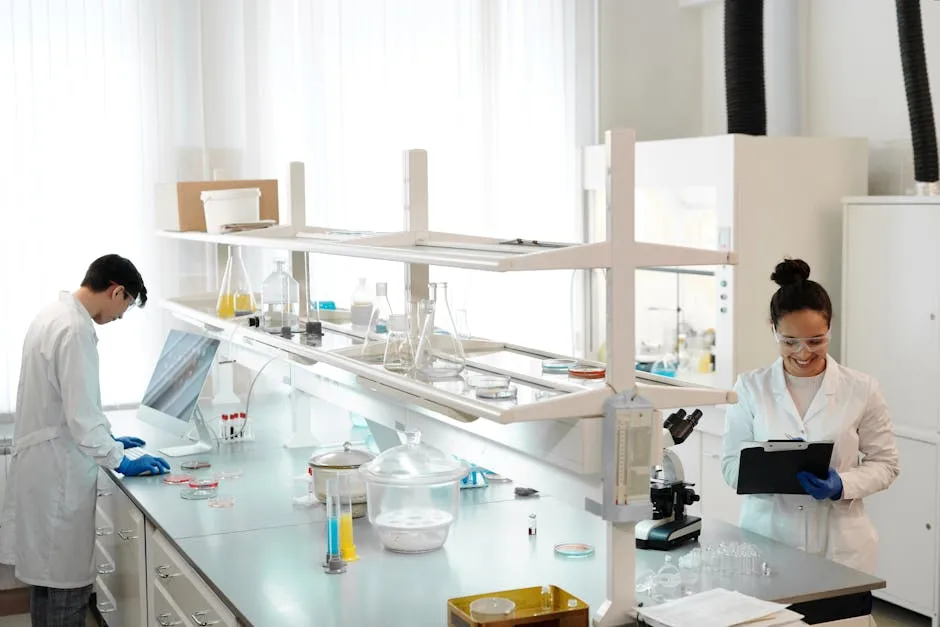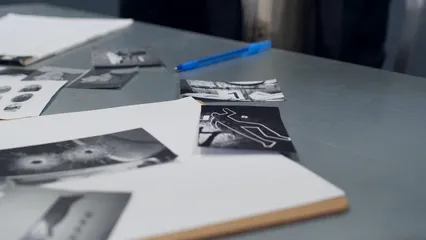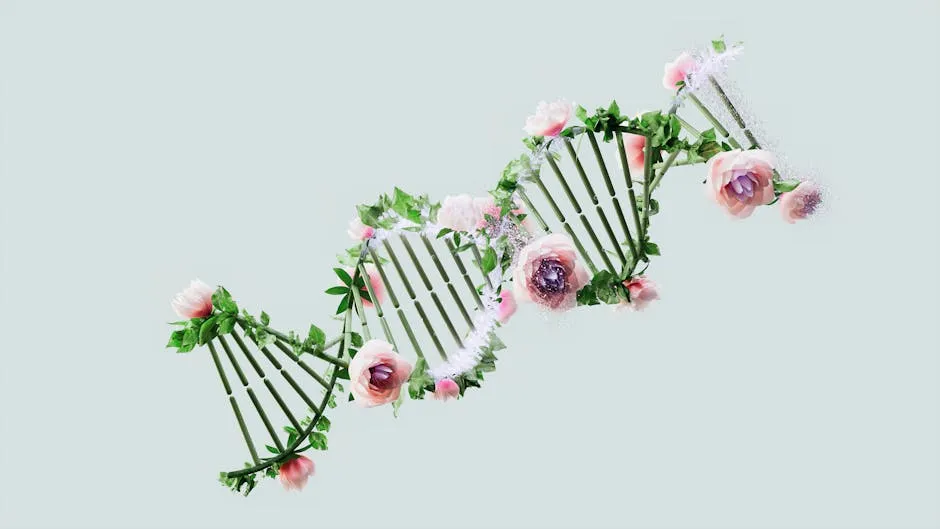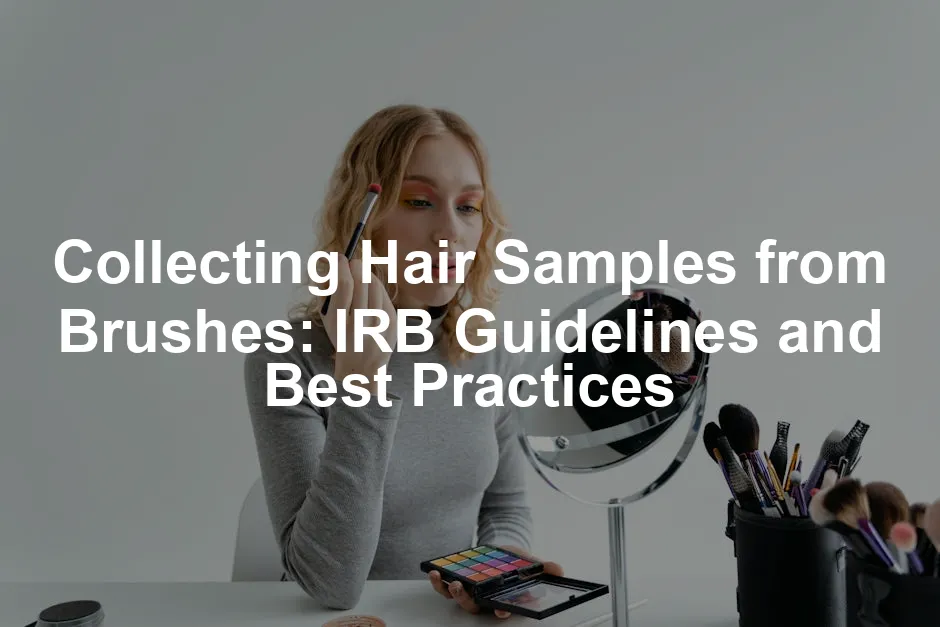Introduction
Collecting hair samples from brushes might seem like a niche topic, but it can be a critical step in various research studies, including toxicology, genetics, and even stress assessment. Imagine discovering the secrets your hair holds—its history of exposure to substances or its role in understanding personal stress levels. In this blog post, we’ll dive deep into the Institutional Review Board (IRB) guidelines surrounding the collection of hair samples from brushes, ensuring you’re equipped with the knowledge to navigate the ethical and procedural waters of this fascinating subject.
And if you’re ready to take the plunge into hair analysis, consider using a Hair Sample Collection Kit. It’s the perfect tool to start your journey into the world of hair analysis, allowing you to gather samples with confidence and care.
Summary
The collection of hair samples, particularly from brushes, can provide invaluable data in both clinical and research settings. However, adhering to IRB guidelines is crucial for maintaining ethical standards and protecting participant rights. This post will explore the importance of informed consent, the necessity of a drug-free environment during sample collection, and the recommended time frame for hair collection. With insights from recent studies and expert recommendations, you’ll gain a comprehensive understanding of how to approach this process ethically and effectively. Stay tuned as we unveil best practices, potential pitfalls, and FAQs related to collecting hair samples from brushes, ensuring you’re well-prepared for your next research endeavor.
1. Understanding Institutional Review Board (IRB) Guidelines
Overview of IRB Purpose
Institutional Review Boards (IRBs) play a vital role in research. They ensure that studies involving human participants are ethical and that participants’ rights are protected. This includes research involving hair sample collection, where sensitive data may be analyzed. Protecting human subjects is paramount. Researchers must ensure that participants are not exposed to unnecessary risks. IRBs help maintain this balance.
Key IRB Guidelines for Hair Sample Collection
Informed consent is a cornerstone of ethical research. Participants must be fully aware of what their involvement entails. This means clearly explaining the purpose of the study, how hair samples will be used, and the potential risks involved. It’s essential to ensure that participants understand their rights, including the right to withdraw at any time.
Justification for using hair samples in studies is also necessary. Researchers must demonstrate that hair samples are the best method for obtaining the needed data. This could be for toxicology tests, genetic studies, or stress assessments. Clearly outlining the benefits of the research helps IRBs evaluate the proposal effectively.
To enhance your research methods, consider picking up a copy of the Institutional Review Board (IRB) Guidelines Book. It’s a must-read for anyone serious about ethical research practices!
Examples of IRB Applications
Successful IRB applications involving hair sample collection often include well-documented proposals. For instance, a study examining the correlation between hair cortisol levels and chronic stress might present data showing how hair samples provide a longer-term view of stress levels compared to other methods. These applications typically include detailed methodologies, participant recruitment strategies, and data analysis plans. By sharing case studies, researchers can demonstrate the feasibility and ethical considerations of their projects, making it easier for IRBs to approve their studies.
In conclusion, understanding IRB guidelines is crucial for researchers collecting hair samples from brushes. By adhering to these guidelines, researchers can ensure ethical practices and protect the rights of participants. The journey of collecting hair samples may be filled with bumps, but with proper knowledge and preparation, smooth sailing is possible!

2. Best Practices for Collecting Hair Samples
Preparing for Sample Collection
Before collecting hair samples from brushes, preparation is key. You want to set the stage for success. Start by educating participants about the process. Inform them about the purpose and importance of the study. Make sure they understand how their contributions will be utilized. This transparency builds trust and ensures participants are comfortable.
Next, create a suitable environment for sample collection. Ideally, this should be a clean, controlled space free from contaminants. A designated area helps maintain focus on the task at hand. Ensure the area is well-lit and organized, with all necessary tools readily available. This includes clean brushes, gloves, and collection bags. By setting up a professional environment, you convey the seriousness of the study.
Additionally, consider the timing of the collection. It’s best to collect samples when participants are sober and free from any substances that could affect results. This may require scheduling the collection at a time when participants are least likely to be under the influence. A drug-free environment is essential for obtaining accurate and reliable samples.
Before you dive into sample collection, make sure you have the right supplies. For instance, using Cleanroom Supplies for Sample Collection can help maintain the integrity of your samples, ensuring you’re set up for success from the start!

Sample Collection Techniques
When it comes to collecting hair samples from brushes, cleanliness is paramount. Always use clean brushes for sample collection. This prevents contamination from previously collected samples or environmental factors. A simple yet effective technique involves gently brushing a small section of hair from the participant’s head or the brush itself. Aim for the area closest to the scalp for the most accurate representation of hair growth.
After brushing, carefully collect the hair strands. Place them in sterile containers or sealed bags to avoid any external contamination. Label each sample clearly with relevant information such as the participant’s ID, date, and location of collection. This step is crucial for maintaining the integrity of the samples.
Proper handling of samples is equally important. Always wear Disposable Gloves during the collection process. This minimizes the risk of transferring oils, dirt, or other substances from your hands to the samples. If possible, use Tweezers for Sample Handling to handle the hair strands, ensuring minimal contact and preserving the sample’s purity.
It’s also wise to document the entire sample collection process. Take notes on the techniques used, the condition of the brushes, and any observations during the procedure. This documentation serves as a vital record and can help troubleshoot issues later on if they arise.
Documenting the Process
Keeping detailed records is a crucial aspect of collecting hair samples. Each collection should be accompanied by thorough documentation. Start with participant demographics, including age, gender, and any relevant medical history. This information can provide context for the study findings.
Next, document the sample provenance. This includes the date and time of collection, the location, and the specific method used. Record any observations during the collection process that may be pertinent to the study. For instance, if a participant had recently dyed their hair, note that down. Such details can impact the analysis of the hair samples later on.
Consider using a standardized data collection form to streamline the documentation process. This ensures you capture all necessary information consistently across different participants. Additionally, electronic systems can enhance accuracy and ease of access for future reference.
Finally, remember that this documentation plays a vital role in maintaining the ethical standards of your research. By keeping meticulous records, you contribute to the transparency and integrity of your study. It allows others to replicate your work, furthering the field’s knowledge base. In the world of research, good documentation can be just as important as the samples themselves.
By following these best practices, you’ll be well on your way to collecting high-quality hair samples from brushes. Your efforts will not only aid in producing reliable research results but also ensure a respectful and ethical approach toward participants. For more insights, check out the best practices for using Israel Central Bureau of Statistics data visualization.

4. Analyzing Hair Samples: What Researchers Should Know
Types of Analyses Conducted on Hair Samples
Analyzing hair samples from brushes can provide a treasure trove of information. Researchers often conduct several types of analyses, each with unique insights.
First up, we have toxicology tests. These tests can detect substances like drugs, alcohol, and heavy metals lodged in your hair. Hair samples can reveal long-term exposure to these substances. It’s like a diary of what you’ve been through—no need for confessionals here!
Next, there’s genetic testing. This can identify DNA markers linked to certain diseases or conditions. Genetic analyses can also help in ancestry tracing or understanding population genetics. Who knew your hair could unveil family secrets? For those interested in digging deeper into their lineage, check out some Genetic Testing Books that can guide you through the process.
Then, let’s talk about cortisol levels. Hair cortisol analysis has become a hot topic in stress research. Cortisol is the hormone that skyrockets when you’re stressed. By measuring cortisol in hair, researchers can gauge chronic stress levels over time. It’s like capturing your stress in slow motion—no filter needed!

Interpreting Results
Interpreting findings from hair samples requires a fine-tooth comb—pun intended! The results can illuminate various aspects of health, behavior, and environment.
For toxicology results, a positive finding might suggest exposure to a substance, but context is critical. Just because you find traces of a substance doesn’t mean it was ingested in a harmful manner. Researchers must consider the detection window and individual circumstances.
When it comes to genetic testing, results can indicate predispositions to diseases. This information can guide further testing or preventive measures. A bit of foresight can go a long way!
Interpreting cortisol levels is equally nuanced. Elevated cortisol might suggest chronic stress, but researchers must consider confounding factors like hair dyeing or washing frequency. It’s essential to recognize that hair can tell a story, but it’s up to researchers to read between the lines.
Limitations of Hair Sample Analysis
Despite its advantages, hair sample analysis isn’t without limitations. One of the primary concerns is contamination. Hair can accumulate environmental pollutants, which may skew results. A hair strand that’s been through the city might not accurately reflect a person’s biological state.
Another limitation arises from external factors affecting cortisol levels. Hair treatments, such as dyeing or washing, can alter results. Studies have shown that frequent washing can leach cortisol from hair, leading to underreported stress levels. Researchers must account for these factors when analyzing results for accuracy.
Moreover, the time frame for detecting substances is also a limitation. Hair grows slowly, meaning it can take weeks to months to show changes. This delays the detection of recent exposures. A person might have stopped using a substance, but their hair could still tell a different story.
In conclusion, hair sample analysis offers valuable insights across various fields. However, researchers should approach the results with caution, fully considering the potential pitfalls and contextual factors. After all, while hair can be a window into one’s history, it’s not always a clear view.

5. Real-World Applications of Hair Sample Research
Case Studies in Toxicology
Hair samples have proven invaluable in toxicology studies. For example, researchers have successfully identified past drug use and environmental exposure through hair analysis. In one study, hair samples from patients in rehabilitation programs were tested for substances like opioids and benzodiazepines. The findings illuminated patterns of substance use over time, helping clinicians tailor treatment plans accordingly.
Another notable case involved hair samples from children in urban environments. Researchers used these samples to assess lead exposure levels, revealing alarming rates of contamination. This information prompted local health initiatives aimed at reducing exposure and protecting vulnerable populations. Hair samples became a catalyst for change, showcasing the power of this analysis.

Genetic Research and Hair Samples
Hair sample collection plays a crucial role in genetic studies too. They provide a non-invasive method to gather DNA, which is essential for various research endeavors. For instance, studies have successfully linked genetic variations to health conditions by analyzing hair samples from diverse populations.
However, ethical considerations in genetic research cannot be overlooked. Informed consent remains paramount. Participants must understand how their genetic information will be used and stored. The potential for misuse of genetic data is a growing concern that researchers must address to maintain public trust.

Stress Assessment: The Role of Hair Cortisol
Research into hair cortisol levels has opened new avenues for stress assessment. Studies measuring cortisol concentrations in hair have revealed significant correlations with psychological stressors. For instance, one study involving mothers highlighted variations in hair cortisol linked to parenting stress. The results provided insights into the impact of stress on health, paving the way for further exploration into coping mechanisms and interventions.
Additionally, hair cortisol analysis has been applied in veterinary studies, assessing stress levels in animals. This research can inform better welfare practices in zoos and shelters, ensuring that both human and animal subjects receive the care they need.
In summary, the real-world applications of hair sample research are vast and impactful. From toxicology to genetics and stress assessment, hair samples provide critical insights that can drive positive change. As researchers continue to unlock the secrets hidden in hair, the potential for improving health outcomes will only grow. Stay tuned for more insightful revelations from the world of hair analysis!

FAQs
What is the minimum time frame for hair sample collection after a substance intake?
The recommended time frame for hair sample collection is typically 4-6 weeks after substance intake. This duration allows for accurate sampling, as it takes time for substances to become incorporated into the hair shaft. Collecting samples too soon may result in unreliable data and an incomplete picture of substance exposure.
How should hair samples be stored post-collection?
Proper storage of hair samples is crucial for preserving their integrity. After collection, place the samples in clean, sterile containers or sealed bags. Store them in a cool, dry place away from direct sunlight and extreme temperatures. Label each sample clearly with identifying information, such as participant ID and collection date, to avoid confusion later.
Can hair samples be collected from individuals under the influence?
Collecting hair samples from individuals under the influence raises ethical concerns. Ideally, hair samples should be collected in a drug-free environment to ensure the accuracy of the results. Collecting from impaired individuals can lead to misinterpretation of the data and may violate ethical guidelines, so it’s best to wait until the individual is sober.
What are common contaminants to be aware of during hair sample collection?
Potential contaminants include environmental pollutants, hair products, and residues from personal care items. To minimize contamination, use clean brushes and sterile tools during sample collection. Document any external factors that may influence the samples, such as recent hair dyeing or washing, to ensure accurate analysis.
How does hair texture affect sample collection and analysis?
Hair texture can influence both the collection and analysis processes. For example, thicker hair may require different brushing techniques compared to fine hair to ensure an adequate sample is obtained. Additionally, variations in hair texture may affect the absorption of substances, leading to differences in analysis results. It’s essential to consider these factors to ensure accurate and reliable outcomes in research.
Conclusion
Collecting hair samples from brushes is not just a quirky research method; it’s a detailed process steeped in ethical guidelines and critical considerations set forth by Institutional Review Boards (IRB). Understanding these guidelines is vital for researchers who want to ensure their work is ethical and meaningful. It’s like hosting a dinner party: you wouldn’t invite guests without knowing the menu or dietary restrictions, would you? Similarly, researchers must be aware of the implications and responsibilities tied to collecting hair samples.
The insights gained from hair sample analysis can profoundly impact various fields, such as toxicology, genetics, and psychological research. By adhering to best practices, researchers can ensure that their findings are not only valid but also respectful of participants’ rights. It’s like crafting a fine wine: every step matters, from the vineyard to the bottle. Each hair sample collected is a piece of a larger puzzle, holding stories and data that can lead to groundbreaking discoveries.
Now, you’re better equipped to handle hair sample collections with a responsible and effective approach. You know the importance of informed consent, maintaining a drug-free environment, and ensuring proper storage of samples. Remember, the hair you collect is more than just strands; it’s a narrative waiting to be told. With this knowledge in hand, you can contribute significantly to the advancement of science, unraveling the mysteries that lie within those tiny fibers.
So, as you proceed with your research, keep in mind: every hair strand has a story. Whether it’s revealing substance exposure, genetic markers, or stress levels, you’re not just collecting samples—you’re uncovering hidden tales of human experience. Here’s to responsible research and the exciting findings that await!
Please let us know what you think about our content by leaving a comment down below!
Thank you for reading till here 🙂
All images from Pexels




